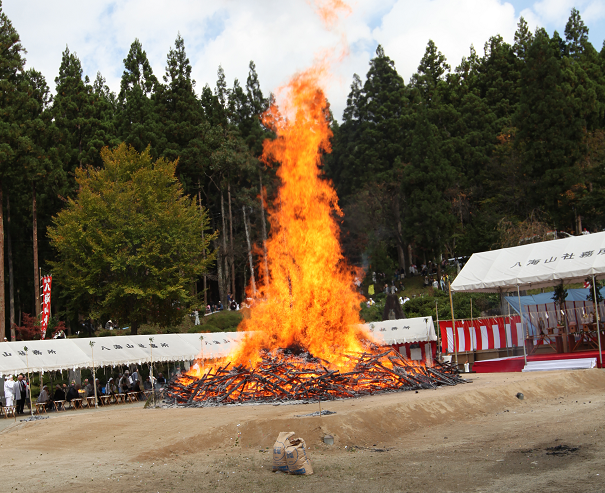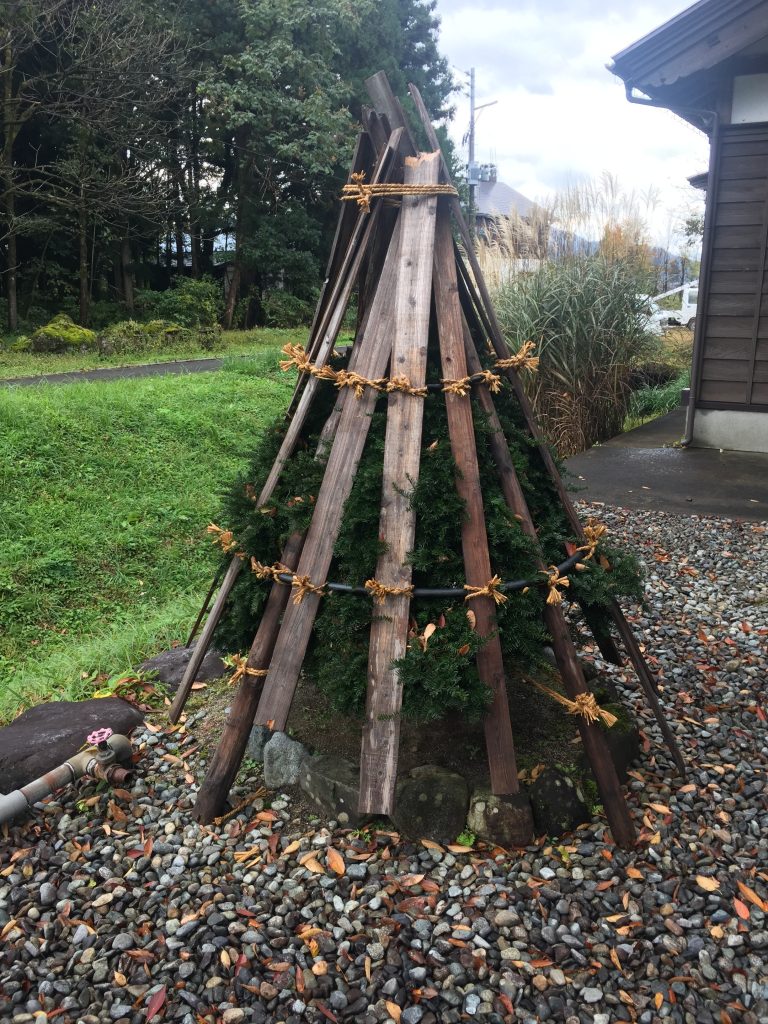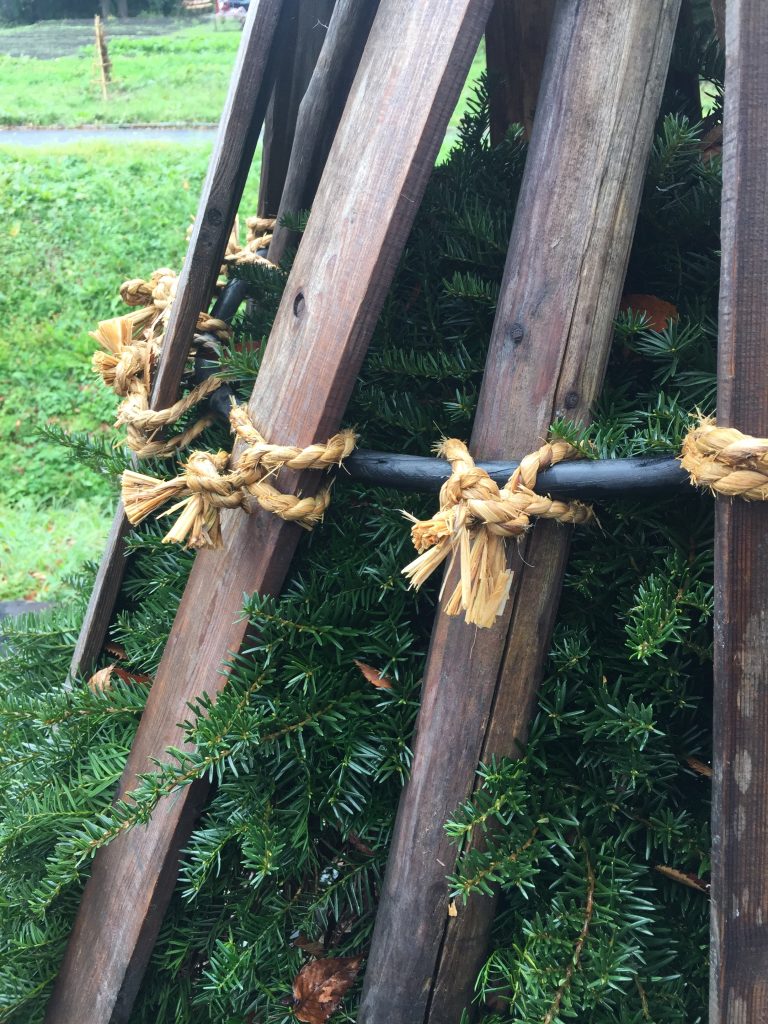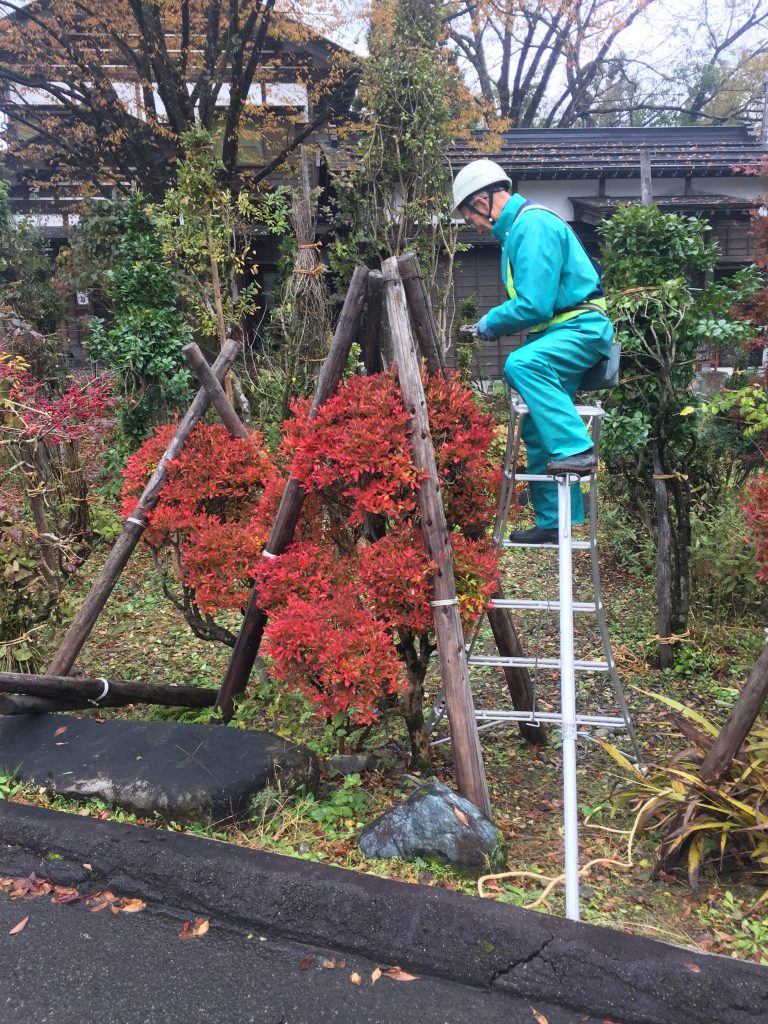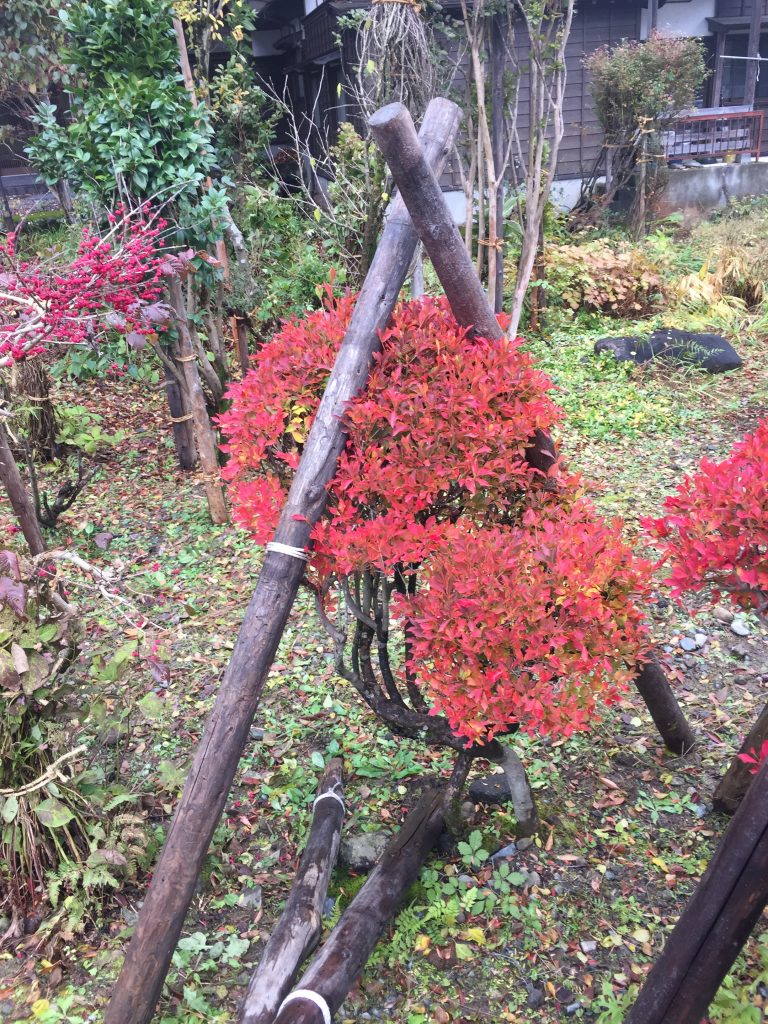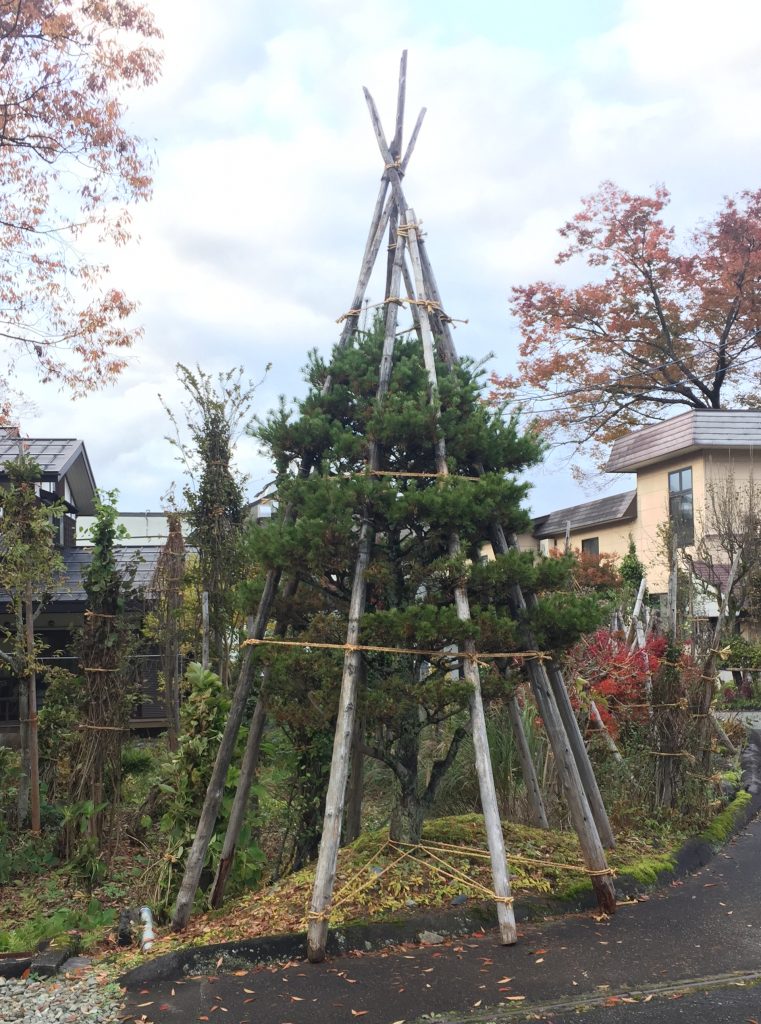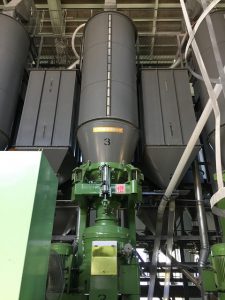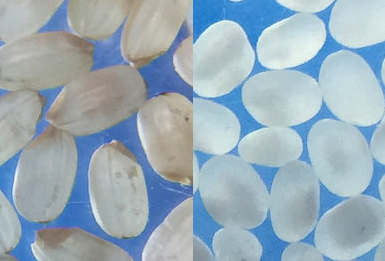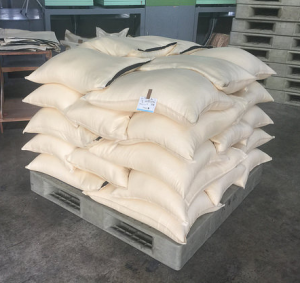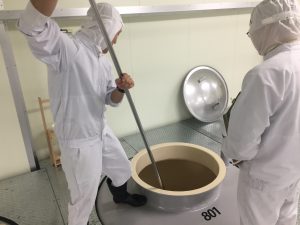
Hachi Kura Building
One of the great things about living here for one year is getting to know even more about Hakkaisan beyond the delicious sake. One place I spend a lot of time is Hakkaisan’s
Uonuma no Sato. Clustered around Hakkaisan’s Daini Kowagura Brewery, where Hakkaisan
Seishu and
Tokubetsu Honjozo are produced, Uonuma no Sato is a group of shops, cafes and restaurants that beautifully illustrate the connection between Hakkaisan and the local culture and community. Over the next few weeks, I’ll profile some of these facilities to introduce you to even more of what Hakkaisan has to offer.
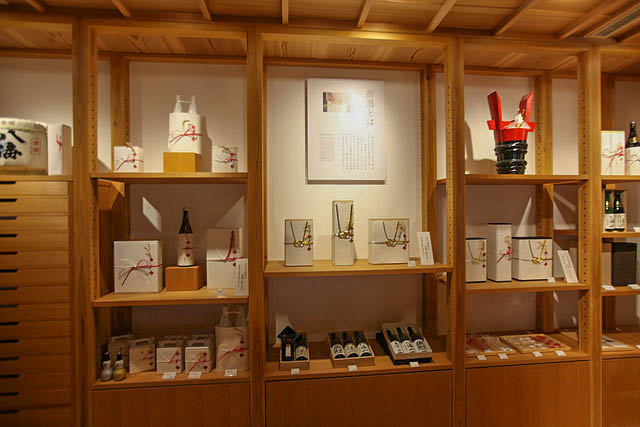
Inside Hachikura – Origata Gift wrapping central!
First off is Hakkaisan’s Hachikura. This is a beautiful gift shop housed in a old snow country house. Primarily, here you can buy all manner of Hakkaisan-produced goods… of course the full range of sake, but also fermented foods, sake cups and glassware, sake cosmetics and more. However, the Hachikura is not just your regular gift shop. They offer a service that is becoming more and more rare in Japan: Origata gift wrapping.
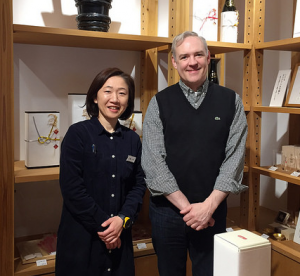
With Hachikura Manager and gift wrapping specialist, Jun Kitsu
Origata is a type of beautiful Japanese gift wrapping that uses a single sheet of paper with folds to wrap a gift, highlighting it’s shape. To hold the paper in place, Mizuhiki cords tied into knots are used. Mizuhiki is a type of stiff washi paper cord and each type of knot has its own colors and symbolic meanings. For serious gift giving occasions such as New Year’s day, weddings, births or funerals, gifts can be purchased at Hachikura and then professionally wrapped using Origata methods featuring the beautiful Mizuhiki knots.
The options and meanings of the different knots are staggering, so I asked Hachikura Manager Ms. Kitsu to be my guide. She explained the process and some of the basic meanings to me. First, a base paper is selected and this paper is used to wrap the item using folds alone with no cutting of the paper. Interestingly, the paper wrapping itself is used to emphasize the shape of the item, not to hide the contents of the gift as we do in the west. The next option is to select a knot to secure the paper to the gift.
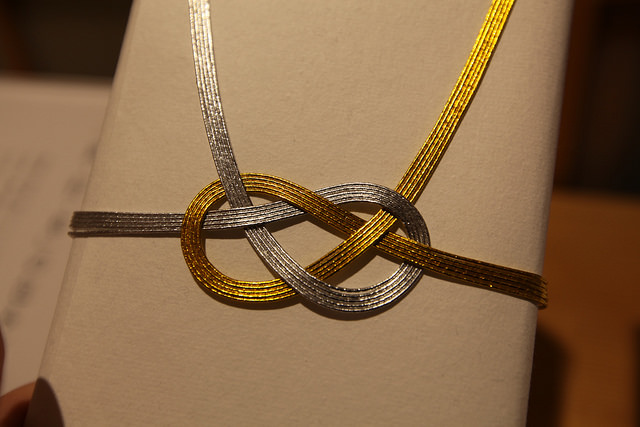
Awajimusubi. Pulling on this knot brings the circles closer together symbolizing close relationships.
The first knot I learned about was the “Awajimusubi”. This is a type of knot that can be used for both happy and sad occasions. It represents a close relationship that cannot easily be undone. When you pull on the ends of the strings, the knot is pulled tighter together symbolizing a closer relationship between the gift giver and receiver.
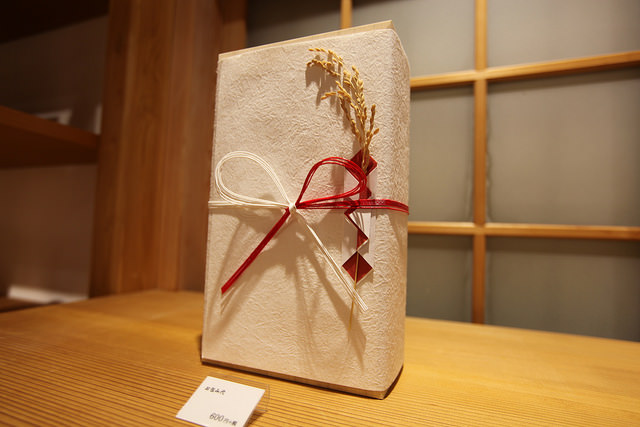
Hanamusubi. A knot that can easily be untied – a symbol for happy events you hope to repeat many times. The rice stalk is a hint to the contents inside.
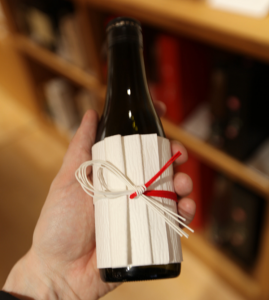
This hanamusubi allows one handed opening of the knot for round objects… like sake bottles (!)
Next I learned about “Hanamusubi”. This is a type of knot that is used to tie gifts for a happy occasion you wish to repeat, such as the birth of a baby. This type of knot is tied in such a way that it is easy to open when pulled, allowing for that happy event to happen again. Based on the shape of the package there are two types of Hanamusubi – flat items have two ends of the knot to pull while round items, such as a bottle of sake(!) have a single end to pull, allowing you to hold the item while opening.
Kitsu-san showed me that Hakkaisan also has it’s own original knot – the “Figure 8 musubi”! This knot is shaped like the number 8 and is meant to represent Hakkaisan (8 peaked mountain) after which Hakkaisan sake is named. It is simple and beautiful!
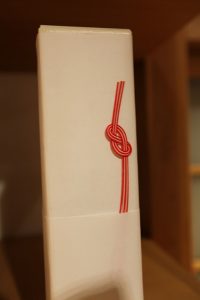
Hakkaisan’s Figure 8 Musubi. A decorative knot symbolizing 8 peaked Hakkaisan Mountian.
Gifts wrapped at the Hakkaisan Hachikura also often include a graceful stalk of rice grains slipped in behind the knot. This is a symbol of the gift’s origin – with sake and our fermented goods of course coming from rice!
The array of wrapping styles on display is beautiful. I can imagine if I received a gift wrapped in the Origata style, I would be very impressed. The simplicity and thoughtfulness of such gift wrapping is really beautiful. Going to these lengths to wrap a gift with such great attention to the paper, knots and colors is a sign of respect for the receiver of the gift.
When I think about some of the wrapping jobs I have done on Christmas or birthday gifts to friends and family in the past, I shudder to think about the amounts of scotch tape I used to hold the whole thing together. This visit to the Hachikura has inspired me to try Origata wrapping myself the next time I have to give a gift! And there is no better way than that to wrap up this blog post.
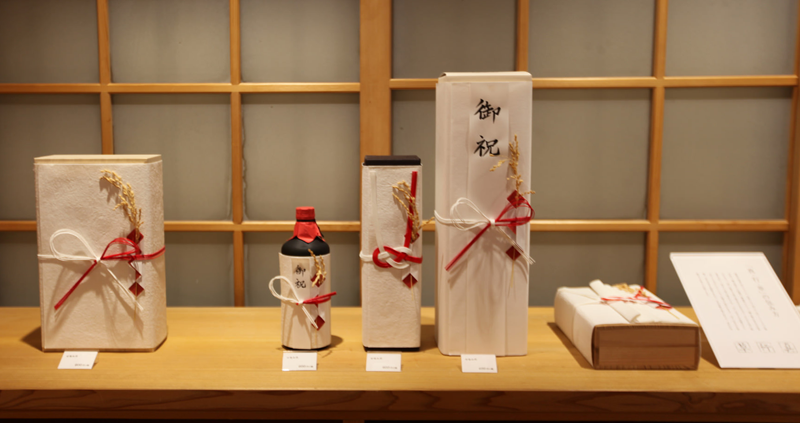
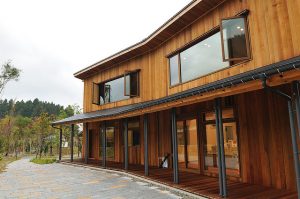
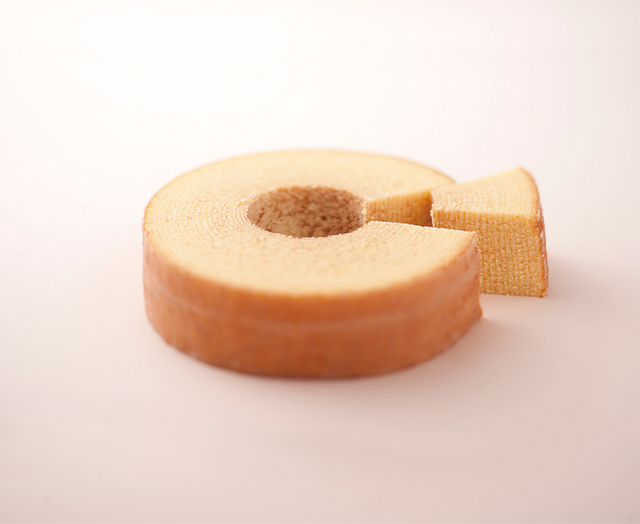
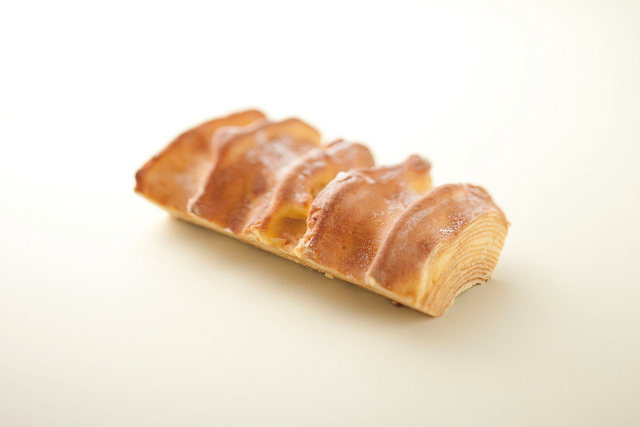
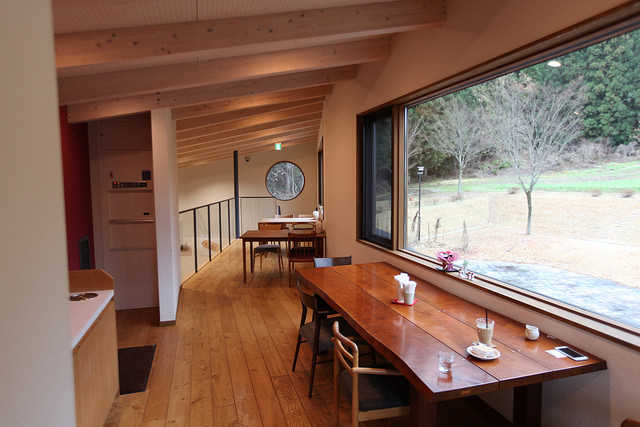
















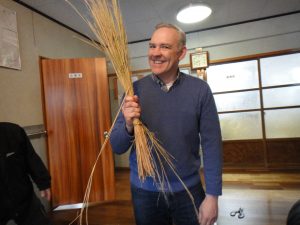 Like so many things in Japanese culture, if you explore a little bit below the surface understanding of any topic, there is a whole world to discover… this is true for sushi, kimono and of course, sake, too.
Like so many things in Japanese culture, if you explore a little bit below the surface understanding of any topic, there is a whole world to discover… this is true for sushi, kimono and of course, sake, too. 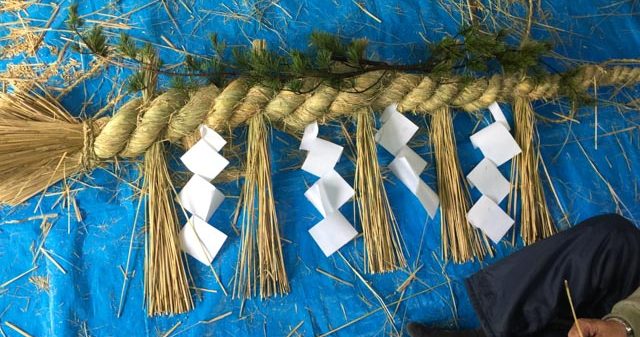
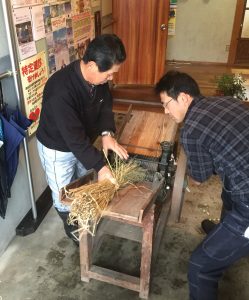 The first step in making our own Shimenawa was to soften the rice straw to make it pliable. To this end, an an old fashioned press appeared from storage. this was a machine that looked like it had seen decades of Shimenawa production. A hand crank was turned and the rice fed through to crush it a bit and soften the fibers.
The first step in making our own Shimenawa was to soften the rice straw to make it pliable. To this end, an an old fashioned press appeared from storage. this was a machine that looked like it had seen decades of Shimenawa production. A hand crank was turned and the rice fed through to crush it a bit and soften the fibers. 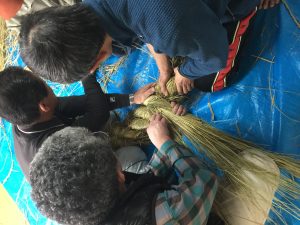 After softening, the rice was brought into the work room and everyone sat down and started working. I first just watched and was amazed to see ropes and other woven decorations begin to appear.
After softening, the rice was brought into the work room and everyone sat down and started working. I first just watched and was amazed to see ropes and other woven decorations begin to appear.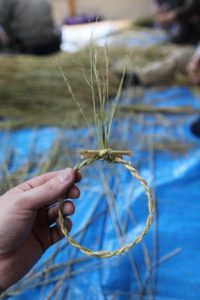 After a quick lesson, I was trying to make my own Shimenawa. My first two tries were a failure with my rope immediately unraveling, but after a bit more instruction, I figured out the trick and soon had a two ply thin rope of my own creation! I tied the rope into a circle to make a wreath.
After a quick lesson, I was trying to make my own Shimenawa. My first two tries were a failure with my rope immediately unraveling, but after a bit more instruction, I figured out the trick and soon had a two ply thin rope of my own creation! I tied the rope into a circle to make a wreath.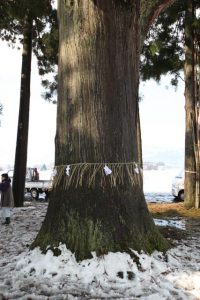
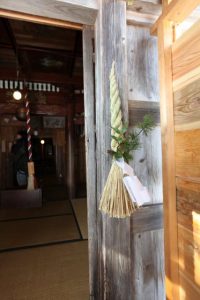
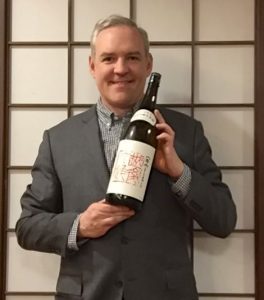 One of my favorite Japanese words that I’ve learned so far is gentei (限定), which simply means limited, but is often applied to a seasonal product or limited release product. Gentei items are popular in Japan! Hakkaisan also has some seasonal products, one of which is sold only in December each year.
One of my favorite Japanese words that I’ve learned so far is gentei (限定), which simply means limited, but is often applied to a seasonal product or limited release product. Gentei items are popular in Japan! Hakkaisan also has some seasonal products, one of which is sold only in December each year.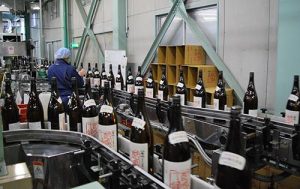
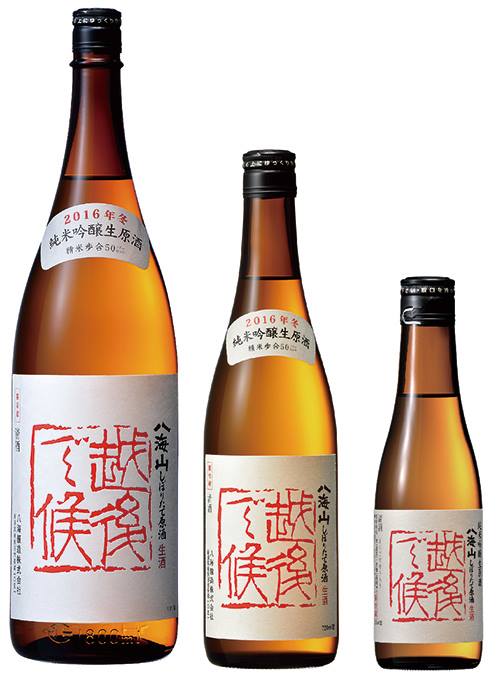
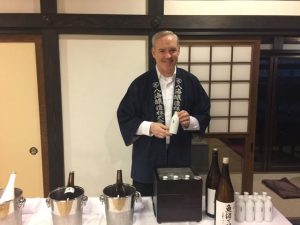 Almost every sake party or event I’ve been to in chilly Niigata has had someone assigned to be the Okanban. In short, the Okanban is the person in charge of warming sake. They make sure the sake is at the right temperature and ready when needed. At a busy event, it can be a lot to juggle, but a good Okanban keeps the sake and the party flowing!
Almost every sake party or event I’ve been to in chilly Niigata has had someone assigned to be the Okanban. In short, the Okanban is the person in charge of warming sake. They make sure the sake is at the right temperature and ready when needed. At a busy event, it can be a lot to juggle, but a good Okanban keeps the sake and the party flowing!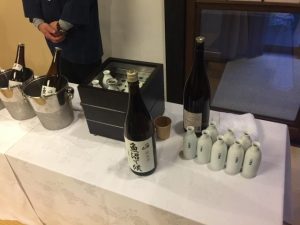 The main tool of the okanban is the shukanki. This is a metal-lined wooden box that allows you to create a hot water bath inside for the sake carafes. A dial on the outside allows you to set the water temperature. This along with a good sake thermometer are what you need to get started.
The main tool of the okanban is the shukanki. This is a metal-lined wooden box that allows you to create a hot water bath inside for the sake carafes. A dial on the outside allows you to set the water temperature. This along with a good sake thermometer are what you need to get started.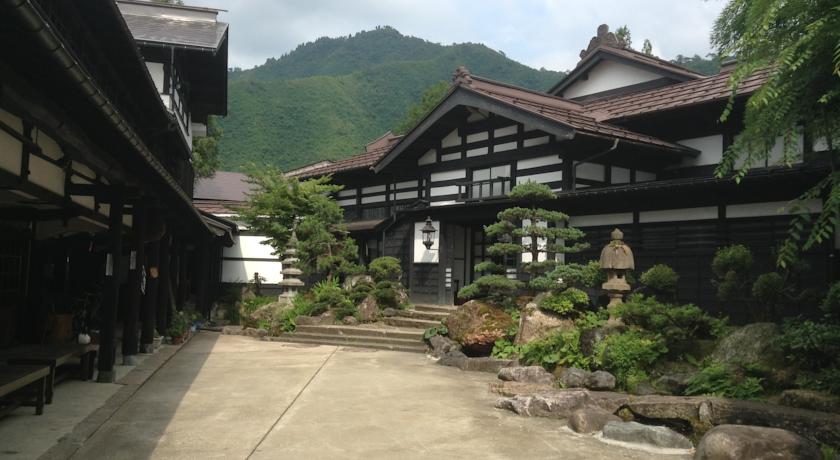
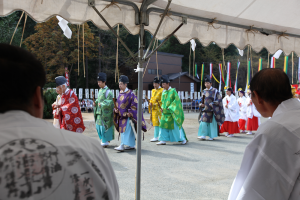 After my arrival in Niigata, I was invited to visit the nearby Hakkaisan Son Jinja Shrine to join in a festival. The god of Hakkaisan Mountain is enshrined there and worshiped by locals. It sounded like a wonderful way to spend a fall afternoon. However, I started to worry a bit when I learned the festival was called “Hiwatari taisai “ or “walking on fire” festival.
After my arrival in Niigata, I was invited to visit the nearby Hakkaisan Son Jinja Shrine to join in a festival. The god of Hakkaisan Mountain is enshrined there and worshiped by locals. It sounded like a wonderful way to spend a fall afternoon. However, I started to worry a bit when I learned the festival was called “Hiwatari taisai “ or “walking on fire” festival. 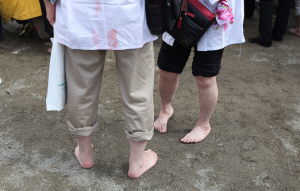 I saw many festival goers walking around barefoot in preparation for the big event. After a beautiful procession of shinto priests, dignitaries and even an ogre (oni), the fire was lit. The flames were soon so high and the heat so intense that the crowd had to move back from the fence. When I saw the huge fire and billowing smoke, I began to question the sanity of the people lining up to walk on the coals, and I took a moment to re-confirm with myself that I would not be walking. When the fire died down, two paths were raked through the coals and sprinkled with salt to temper the heat.
I saw many festival goers walking around barefoot in preparation for the big event. After a beautiful procession of shinto priests, dignitaries and even an ogre (oni), the fire was lit. The flames were soon so high and the heat so intense that the crowd had to move back from the fence. When I saw the huge fire and billowing smoke, I began to question the sanity of the people lining up to walk on the coals, and I took a moment to re-confirm with myself that I would not be walking. When the fire died down, two paths were raked through the coals and sprinkled with salt to temper the heat. 
